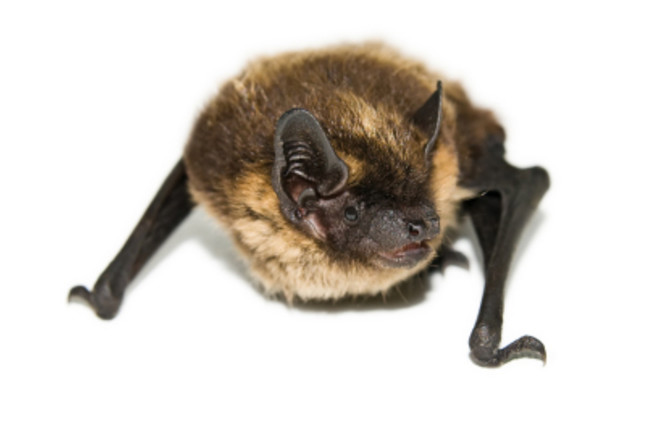In 2006 wildlife specialist Al Hicks of the New York State Department of Environmental Conservation received a worried phone call. While conducting their biannual survey of the local bat population, his surveyors had walked into a cave near Albany and found themselves surrounded by death. Where two years ago there had been a thriving colony, thousands of bat carcasses littered the cave floor. Their bodies bore strange white spots, especially around their noses. Hicks had never heard of anything like it, and other bat researchers who saw photographs of the victims were equally baffled.
Bats became the latest addition to a list of animals hit by sudden, mysterious declines. Around the same time Hicks’s team visited the cave, beekeepers began to report that their colonies were disappearing. In 2004 the International Union for the Conservation of Nature (IUCN) declared a third of the world’s known amphibian species threatened or extinct. And a long-term study of 17 snake species spanning three continents published this summer found that 11 were rapidly dwindling. In many cases, the declines probably have multiple causes, including habitat loss, pollution, and climate change. But among some creatures, like the bats, disease seems to be the primary culprit. Wildlife researchers are now fighting back, working to identify and understand the deadly pathogens and testing ways to protect the remaining healthy animals.
The white spots on the bats were an early clue that something unusual had killed them. Hicks collected several bodies and sent them to labs around the country. Microbiologist David Blehert of the National Wildlife Health Center in Madison, Wisconsin, isolated a previously unknown strain of Geomyces, a fungus that normally feeds on dead organic matter. It thrives at low temperatures—a trait that fit with Hicks’s observation that only hibernating bats seemed to be affected by the disease, which came to be known as white-nose syndrome. “This strain fails to recognize the difference between dead organic matter and living tissue,” Blehert says. When bats go into hibernation, their body temperature drops and the fungus takes hold, eating away at the animals’ muzzles and wings.
Although the fungus, which Blehert called Geomyces destructans, has not been definitively linked to white-nose syndrome, many scientists consider it the most likely cause. It has turned up everywhere the syndrome has appeared. And the outbreak is spreading. Bats of at least six species in eastern North America have been affected. In some caves, every bat has succumbed. The total death count runs to more than a million animals, leading the U.S. Fish and Wildlife Service to describe white-nose syndrome as “the worst wildlife health crisis in memory.” Since females of many species give birth to just a single offspring each year, populations could remain depressed for a long time to come. And a bat crash could leave us with larger numbers of a less desirable species: A single bat can consume as many as 600 mosquitoes in an hour.
Frogs and other amphibians, meanwhile, are battling a killer fungus of their own. Infection with Batrachochytrium dendrobatidis, or Bd, triggers a disease called chytridiomycosis. It has been implicated in the decline or extinction of up to 200 species of frogs alone; the IUCN has declared Bd to be “the worst infectious disease ever recorded among vertebrates in terms of the number of species impacted and its propensity to drive them to extinction.”
Close study of Bd-infected animals offers a glimmer of hope, however. The fungus kills by blocking the transport of sodium and potassium ions across amphibians’ skin, causing an electrolyte imbalance and eventually shutting down the cardiovascular system. But some amphibians carry the fungus while displaying no symptoms. Reid Harris, a biologist at James Madison University in Virginia, is examining salamanders with natural resistance in hopes of finding a preventive treatment. He noticed that the skin of resistant red-backed salamanders hosts a bacterium, Janthinobacterium lividum, that produces an antifungal compound called violacein. To test whether violacein might protect against the disease, Harris and his team bathed a group of mountain yellow-legged frogs in the salamander skin bacterium while another group went untreated. They then exposed all of the frogs to Bd. Every untreated animal died of chytridiomycosis, but those bathed in the bacterium showed no symptoms. Harris is now exploring ways to increase wild populations of these protective bacteria. He hopes to isolate strains from ponds and grow them in culture, then capture, treat, and release frogs. “The idea is to augment bacteria that are already there,” he says.
Resistance may hold the key to saving bats as well. In March 2009 a hibernating bat with a white spot on its muzzle—otherwise in apparently good health—was found in France, the first confirmed sighting of the fungus outside of North America. Since then, Blehert and colleagues have found bats that are similarly unharmed by Geomyces in three more European countries; this hints that populations there may be resistant. Now the race is on to figure out what protects some animals and to extend that protection to others.
Buzzwords
WHITE-NOSE SYNDROME A new disease that is killing record numbers of bats. Symptoms include white spots on the nose and wings, as well as unusual behavior, such as flying outside during daylight in cold weather.
CHYTRIDIOMYCOSIS A fungal disease affecting global amphibian populations. Infection interferes with the function of the animals’ cardiovascular system, eventually killing them.
ELECTROLYTE IMBALANCE Abnormal levels of mineral ions. Amphibians with chytridiomycosis lose the ability to absorb such ions through their skin, and this disrupts muscle and nerve function.
VIOLACEIN An antifungal compound produced by bacteria on the skin of certain amphibians. Violacein-producing bacteria may help protect wild amphibians against chytridiomycosis.

